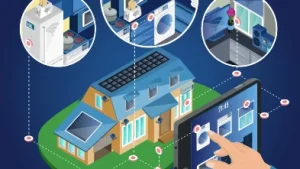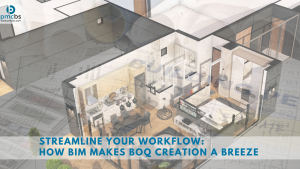Are you prepared to elevate your construction projects to new heights? Whether you’re a seasoned professional or just starting out in the industry, achieving construction excellence is within your reach. In your guide to construction excellence, we’ll explore the best practices for construction projects and delve into the essential elements of construction project management. Let’s embark on a journey to build better and elevate the standard of construction excellence.
Table of Contents
Understanding Construction Excellence
Construction excellence goes beyond simply completing projects on time and within budget. It encompasses delivering high-quality results that meet or exceed client expectations while adhering to safety standards and sustainable practices.
Setting the Foundation for Success
Clear Vision and Goals
Before embarking on a construction project, it’s crucial to establish a clear vision and set of goals. Define the project scope, objectives, and success criteria to guide decision-making and ensure alignment among stakeholders.
Robust Planning and Strategy
Develop a comprehensive project plan outlining tasks, timelines, resource allocations, and risk management strategies. A well-defined plan serves as a roadmap for success and helps mitigate potential challenges throughout the project lifecycle.
Effective Project Planning and Scheduling
Detailed Work Breakdown Structure (WBS)
Create a detailed Work Breakdown Structure (WBS) to decompose the project scope into manageable tasks and activities. This hierarchical structure helps organize and prioritize work, facilitating efficient project execution.
Critical Path Method (CPM)
Utilize the Critical Path Method (CPM) to identify the sequence of activities and determine the longest path through the project schedule. By focusing on critical tasks, project managers can allocate resources effectively and minimize delays.
Prioritizing Safety in Construction
Safety Culture
Foster a safety-first culture within your organization by promoting awareness, training, and adherence to safety protocols. Empower employees to identify hazards, report near misses, and take proactive measures to prevent accidents.
Regular Training and Certification
Invest in regular safety training and certification programs for construction workers and project teams. Equip them with the knowledge and skills to recognize and mitigate risks, ensuring a safe working environment for all.
Quality Assurance and Control
Establishing Quality Standards
Define clear quality standards and specifications for materials, workmanship, and project deliverables. Conduct regular inspections and audits to ensure compliance with these standards throughout the construction process.
Continuous Monitoring and Improvement
Implement continuous monitoring and improvement processes to identify and address quality issues promptly. Feedback loops and lessons learned sessions help refine processes and prevent recurring issues in future projects.
Leveraging Technology for Efficiency
BIM and Digital Tools
Harness the power of Building Information Modeling (BIM) and digital tools to streamline project workflows and improve collaboration. BIM enables visualization, coordination, and data-driven decision-making throughout the project lifecycle.
Construction Management Software
Invest in construction management software to centralize project information, automate tasks, and track progress in real-time. These platforms facilitate communication, document management, and resource allocation, enhancing efficiency and transparency.
Enhancing Communication and Collaboration
Open and Transparent Communication
Promote open and transparent communication among project stakeholders to foster collaboration and alignment. Regular meetings, progress reports, and shared platforms facilitate information exchange and decision-making.
Collaborative Project Delivery Methods
Explore collaborative project delivery methods such as Design-Build and Integrated Project Delivery (IPD) to encourage teamwork and integration among designers, contractors, and owners. These approaches promote early collaboration and shared risk/reward structures.
Managing Resources Efficiently
Resource Optimization
Optimize resource allocation to maximize productivity and minimize waste. Implement lean construction principles and just-in-time delivery strategies to streamline operations and reduce costs.
Talent Development and Retention
Invest in talent development and retention initiatives to cultivate a skilled workforce and foster employee loyalty. Provide training, mentorship, and advancement opportunities to attract and retain top talent in the industry.
Embracing Sustainability in Construction
Green Building Practices
Embrace green building practices and sustainable construction methods to minimize environmental impact and enhance long-term sustainability. Incorporate energy-efficient design, renewable materials, and waste reduction strategies into project planning and execution.
Certifications and Standards
Seek certifications and compliance with sustainability standards such as LEED (Leadership in Energy and Environmental Design) to demonstrate commitment to environmental stewardship. These certifications enhance project credibility and marketability while reducing operational costs.
Continuous Improvement and Adaptation
Lessons Learned and Feedback
Conduct lessons learned sessions and solicit feedback from project stakeholders to identify areas for improvement and innovation. Implementing lessons learned promotes continuous improvement and adaptation to evolving industry trends and challenges.
Agile Project Management
Adopt agile project management methodologies to adapt quickly to changing requirements and stakeholder needs. Agile approaches emphasize iterative development, flexibility, and collaboration, enabling teams to respond effectively to unforeseen challenges.
FAQs: Answering Your Burning Questions
1. What are the key benefits of achieving construction excellence?
Achieving construction excellence results in higher quality, lower costs, faster delivery, and greater customer satisfaction. It also enhances the reputation and credibility of construction firms in the industry.
2. How can construction project managers ensure effective communication among project stakeholders?
Construction project managers can ensure effective communication by establishing clear communication channels, setting expectations, and proactively addressing issues. Regular meetings, progress reports, and collaborative platforms facilitate information exchange and decision-making.
3. What role does technology play in achieving construction excellence?
Technology plays a pivotal role in achieving construction excellence by streamlining workflows, improving collaboration, and enhancing efficiency. Tools such as BIM, construction management software, and digital platforms empower project teams to work smarter and achieve better results.
4. How can construction firms promote sustainability in their projects?
Construction firms can promote sustainability by incorporating green building practices, using renewable materials, minimizing waste, and seeking certifications such as LEED. Embracing sustainability not only benefits the environment but also enhances project value and marketability.
5. What are some strategies for continuous improvement in construction projects?
Strategies for continuous improvement in construction projects include conducting lessons learned sessions, soliciting feedback from stakeholders, adopting agile methodologies, and investing in training and development. These strategies enable construction firms to adapt to changing conditions and drive ongoing improvement.





